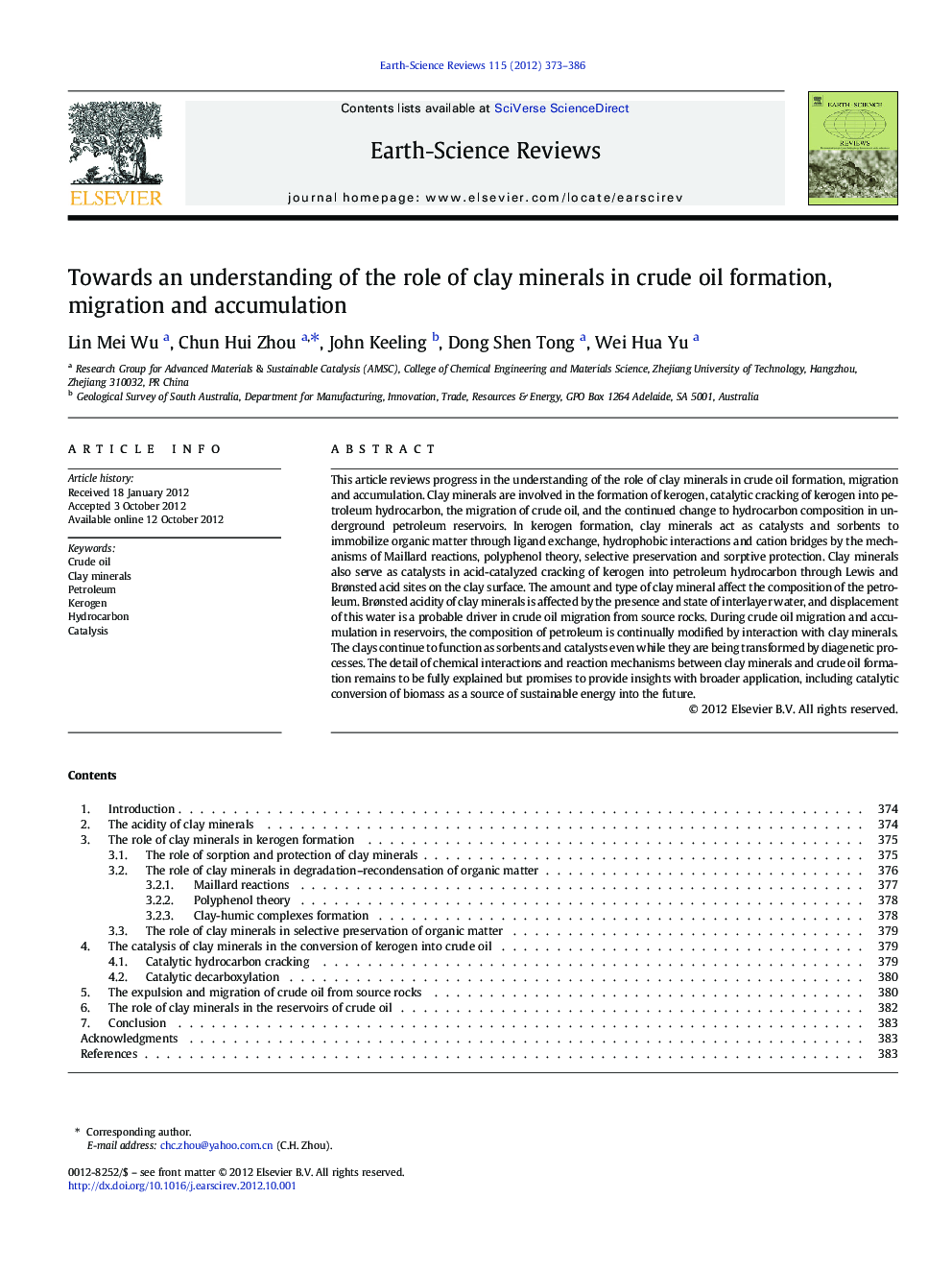| Article ID | Journal | Published Year | Pages | File Type |
|---|---|---|---|---|
| 4725919 | Earth-Science Reviews | 2012 | 14 Pages |
This article reviews progress in the understanding of the role of clay minerals in crude oil formation, migration and accumulation. Clay minerals are involved in the formation of kerogen, catalytic cracking of kerogen into petroleum hydrocarbon, the migration of crude oil, and the continued change to hydrocarbon composition in underground petroleum reservoirs. In kerogen formation, clay minerals act as catalysts and sorbents to immobilize organic matter through ligand exchange, hydrophobic interactions and cation bridges by the mechanisms of Maillard reactions, polyphenol theory, selective preservation and sorptive protection. Clay minerals also serve as catalysts in acid-catalyzed cracking of kerogen into petroleum hydrocarbon through Lewis and Brønsted acid sites on the clay surface. The amount and type of clay mineral affect the composition of the petroleum. Brønsted acidity of clay minerals is affected by the presence and state of interlayer water, and displacement of this water is a probable driver in crude oil migration from source rocks. During crude oil migration and accumulation in reservoirs, the composition of petroleum is continually modified by interaction with clay minerals. The clays continue to function as sorbents and catalysts even while they are being transformed by diagenetic processes. The detail of chemical interactions and reaction mechanisms between clay minerals and crude oil formation remains to be fully explained but promises to provide insights with broader application, including catalytic conversion of biomass as a source of sustainable energy into the future.
